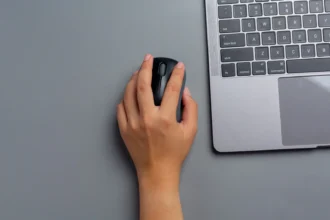The quest to piece together the fragments of history often leads to unexpected revelations. Such is the story of a Spanish Egyptologist, Marina Escolano-Poveda, who embarked on a journey to unravel the secrets of a mysterious 4,000-year-old papyrus, revealing the depths of ancient Egyptian philosophy and, in turn, shedding light on questions that have haunted humanity for millennia.
The fragments in question belonged to the “Debate between a Man and his Ba (soul),” a text regarded as one of the earliest known philosophical writings, predating even the term ‘philosophy’ itself, which originated in Ancient Greece. This text, preserved in the Egyptian Museum of Berlin, is considered one of the most significant Egyptian papyri globally, making Escolano-Poveda’s discovery all the more monumental.
Escolano-Poveda, a passionate researcher from Alicante with a PhD in Egyptology from Johns Hopkins University, stumbled upon small strips of parchment at the Biblical Museum of Mallorca. To her astonishment, these fragments were the missing heading to the “Debate between a Man and his Ba,” effectively completing the historical puzzle. The Alicante native is now seeking funding to physically join the fragments with the original papyrus, ensure proper conservation, and complete its study before returning them to the Museum of Mallorca.
The “Debate between a Man and his Ba” is a conversation between a sick man and his own soul, reflecting on his situation and the human condition. This profound text delves into emotions, fears, and the intimate contemplation of whether life is worth living under adverse circumstances. Its significance lies in providing insights into the Egyptian conception of death, as it discusses these existential questions in a remarkably personal and intimate tone. This rarity of this text is underscored by the fact that literary compositions were few and far between during that time.
Escolano-Poveda’s groundbreaking analysis was welcomed with enthusiasm by leading specialists in classical Egyptian literature, such as James Allen from Brown University and Richard Parkinson from Oxford. The papyrus scroll, first published in 1896 by German Egyptologist Adolf Erman, had been examined by numerous experts from around the world, but its complete meaning remained elusive due to the missing first part. The Mallorca fragment, which reveals the text’s context as a conversation with a dying man, was the key to unlocking its full meaning.
Escolano-Poveda’s journey to this remarkable discovery began in 2010 when she visited the Biblical Museum of Mallorca to give a lecture on the Rosetta Stone and the Coptic language’s role in deciphering hieroglyphic writing. During her visit, she was shown over sixty small fragments, which had been largely ignored until then. Despite their dry and brittle appearance, these fragments piqued her interest due to their age and the classical Egyptian language and hieratic script they bore. At the time, she did not realize their significance.

The museum’s collection, mostly assembled by Bartolomé Pascual Marroig, a Mallorcan bishop passionate about the Old Testament, includes parts of the famous Book of the Dead. How the fragments ended up in Mallorca remains a mystery. It is suspected that the papyrus rolls, discovered in Egypt in the 1830s, were auctioned in London and incorporated into the Berlin collection in 1843. However, how a portion ended up in Palma is unknown.
In the years following her initial visit to the museum, Escolano-Poveda dedicated herself to studying the fragments in-depth. She also visited the Berlin Museum, where she analyzed the papyrus scroll of the “Debate between the Man and his Ba” with the authorization of Dr. Verena Lepper, the curator of those papyri. Through meticulous analysis and comparison of the fragments from Mallorca and the parchment from the Berlin Museum, she had a breakthrough one sleepless night. She realized that the same scribe had written the texts in Berlin and Palma, completing the same text.
Escolano-Poveda’s discovery has far-reaching implications, as it underscores the cultural importance of the East in Western civilization’s history. Gerardo Jofré, manager of the Biblical Museum of Mallorca Commission, emphasized the significance of this finding and noted the challenges of preserving the material and the potential issues related to the papyri leaving the museum, as they belong to the Church and the Spanish State.
The story of the ancient Egyptian scribe and the Alicante researcher highlights the enduring quest for knowledge and the importance of preserving our shared cultural heritage. Escolano-Poveda’s discovery not only completes a historical puzzle but also provides invaluable insights into ancient Egyptian philosophy and the human condition. As efforts continue to physically unite the fragments and ensure their proper conservation, the legacy of this mysterious 4,000-year-old papyrus will be preserved for future generations to ponder and learn from.
Click on this link to read this article in French version
















